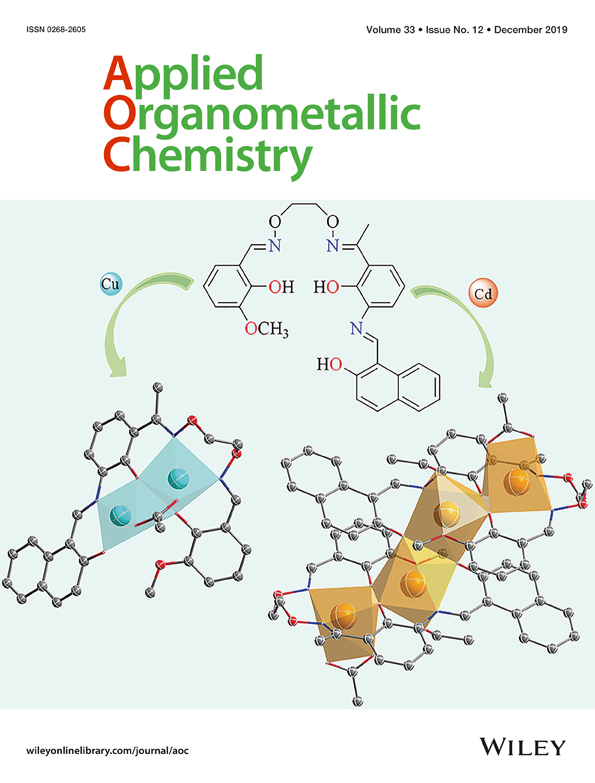Triazole-based ligands functionalized silica: Effects of ligand denticity and donors on catalytic oxidation activity of Pd nanoparticles
Abstract
Triazole-based ligands, tris (triazolyl)methanol (Htbtm), bis (triazolyl)-phenylmethanol (Hbtm), and phenyl (pyridin-2-yl)(triazolyl)methanol (Hpytm), with differences in ligand denticity (i.e., bidentate and tridentate) and type of N donors (i.e., triazole and pyridine) were functionalized onto a silica support to produce the corresponding SiO2-L (L = tbtm, btm, pytm). Subsequent reactions with Pd (CH3COO)2 in CH2Cl2 yielded Pd/SiO2-L. ICP-MS reveals that Pd loadings are higher with increased N loadings, resulting in the following trend: Pd/SiO2-tbtm (0.83 mmol Pd g−1) > Pd/SiO2-btm (0.65 mmol Pd g−1) ~ Pd/SiO2-pytm (0.63 mmol Pd g−1). Meanwhile, TEM images of the used Pd/SiO2-L catalysts after the first catalytic cycle show that the mean size of Pd NPs is highest with Pd/SiO2-pytm (8.5 ± 1.5 nm), followed by Pd/SiO2-tbtm (6.4 ± 1.6 nm) and Pd/SiO2-btm (4.8 ± 1.3 nm). Based on TONs, catalytic studies toward aerobic oxidation of benzyl alcohol to benzaldehyde at 60 °C in EtOH showed that Pd/SiO2-pytm possessed the most active surface Pd(0) atoms, most likely as a result of more labile properties of the pyridine–triazole ligand compared to tris- and bis (triazolyl) analogs. ICP-MS and TEM analysis of Pd/SiO2-btm indicate minimal Pd leaching and similar average Pd NPs sizes after 1st and 5th catalytic runs, respectively, confirming that SiO2-btm is an efficient Pd NPs stabilizer. The Pd/SiO2-btm catalyst was also active toward aerobic oxidation of various benzyl alcohol derivatives in EtOH and could be reused for at least 7 reaction cycles without a significant activity loss.




